
Influenza A virus subtype H1N1 (A/H1N1) is a subtype of influenza A virus (IAV). Some human-adapted strains of H1N1 are endemic in humans and are one cause of seasonal influenza (flu). Other strains of H1N1 are endemic in pigs and in birds. Subtypes of IAV are defined by the combination of the antigenic H and N proteins in the viral envelope; for example, "H1N1" designates an IAV subtype that has a type-1 hemagglutinin (H) protein and a type-1 neuraminidase (N) protein.

The 2009 swine flu pandemic, caused by the H1N1/swine flu/influenza virus and declared by the World Health Organization (WHO) from June 2009 to August 2010, was the third recent flu pandemic involving the H1N1 virus. The first identified human case was in La Gloria, Mexico, a rural town in Veracruz. The virus appeared to be a new strain of H1N1 that resulted from a previous triple reassortment of bird, swine, and human flu viruses which further combined with a Eurasian pig flu virus, leading to the term "swine flu".

The 2009 swine flu pandemic in Canada was part of an epidemic in 2009 of a new strain of influenza A virus subtype H1N1 causing what has been commonly called swine flu. In Canada, roughly 10% of the populace has been infected with the virus, with 428 confirmed deaths ; non-fatal individual cases are for the most part no longer being recorded. About 40% of Canadians have been immunized against H1N1 since a national vaccination campaign began in October 2009, with Canada among the countries in the world leading in the percentage of the population that has been vaccinated. The widespread effect of H1N1 in Canada raised concerns during the months leading to the XXI Olympic Winter Games, which took place in Vancouver in February 2010.

This article covers the chronology of the 2009 novel influenza A (H1N1) pandemic. Flag icons denote the first announcements of confirmed cases by the respective nation-states, their first deaths, and relevant sessions and announcements of the World Health Organization (WHO), the European Union , and the U.S. Centers for Disease Control (CDC).

In March and April 2009, an outbreak of a new strain of influenza commonly referred to as swine flu infected many people in Mexico and parts of the United States causing severe illness in the former. The new strain was identified as a combination of several different strains of Influenzavirus A, subtype H1N1, including separate strains of this subtype circulating in humans and in pigs. Spain was the first country in continental Europe to report cases of swine flu, in late April 2009.

The 2009 swine flu pandemic was a global outbreak of a new strain of influenza A virus subtype H1N1, first identified in April 2009, termed Pandemic H1N1/09 virus by the World Health Organization (WHO) and colloquially called swine flu. The outbreak was first observed in Mexico, and quickly spread globally. On 11 June 2009, the WHO declared the outbreak to be a pandemic. The overwhelming majority of patients experienced mild symptoms, but some persons were in higher risk groups, such as those with asthma, diabetes, obesity, heart disease, who were pregnant or had a weakened immune system. In the rare severe cases, around 3–5 days after symptoms manifest, the sufferer's condition declines quickly, often to the point of respiratory failure.
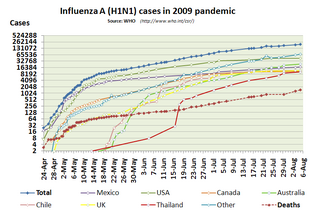
This article deals with the status and efforts regarding the 2009 swine flu pandemic by country and continent/region.

The pandemic H1N1/09 virus is a swine origin influenza A virus subtype H1N1 strain that was responsible for the 2009 swine flu pandemic. This strain is often called swine flu by the public media due to the prevailing belief that it originated in pigs. The virus is believed to have originated around September 2008 in central Mexico.
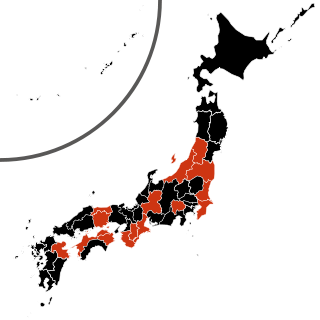
The 2009 Japan flu pandemic was an outbreak of the H1N1 and the Influenza A viruses across Japan. The World Health Organization raised the pandemic alert for influenza to level 4 in April 2009 following a worldwide outbreak of the H1N1 influenza strain. The first Japanese infections of H1N1 and Influenza A were both recorded early in May 2009. In August 2009, the government estimated that the virus strains had infected about 760,000 people. At the height of the pandemic in October 2009, it was estimated that 20% of the Japanese population had been infected and that there were on average more than 20 infected people in each Japanese medical facility. The Ministry of Health, Labor and Welfare reported 198 Deaths as of March 30, 2010. Japan put several measures in place to attempt to control the spread of infection including quarantining air travellers entering Japan who were suspected of having the virus and closing schools in areas of Japan with high numbers of infection. The pandemic ended in August 2010 when the World Health Organization announced that worldwide influenza infection number were back to the seasonal average before the outbreak occurred.
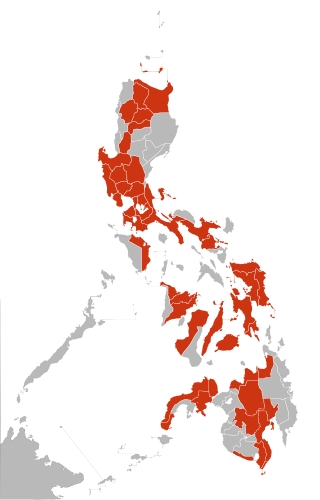
The 2009 swine flu pandemic was confirmed to have spread to the Philippines on May 21, 2009. In the following days, several local cases were reported to be caused by contact with two infected Taiwanese women who attended a wedding ceremony in Zambales.
The 2009 flu pandemic in South America was part of a global epidemic in 2009 of a new strain of influenza A virus subtype H1N1, causing what has been commonly called swine flu. As of 9 June 2009, the virus had affected at least 2,000 people in South America, with at least 4 confirmed deaths. On 3 May 2009, the first case of the flu in South America was confirmed in a Colombian man who recently travelled from Mexico – since then, it has spread throughout the continent. By far, the most affected country has been Chile, with more than 12,000 confirmed cases, 104 deaths, and the highest per capita incidence in the world.

The 2009 flu pandemic in Asia, part of an epidemic in 2009 of a new strain of influenza A virus subtype H1N1 causing what has been commonly called swine flu, afflicted at least 394,133 people in Asia with 2,137 confirmed deaths: there were 1,035 deaths confirmed in India, 737 deaths in China, 415 deaths in Turkey, 192 deaths in Thailand, and 170 deaths in South Korea. Among the Asian countries, South Korea had the most confirmed cases, followed by China, Hong Kong, and Thailand.

The 2009 swine flu pandemic in North America, part of a pandemic in 2009 of a new strain of influenza A virus subtype H1N1 causing what has been commonly called swine flu, began in the United States or Mexico.
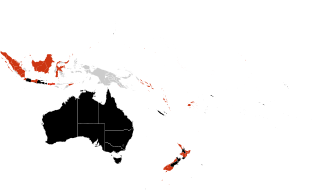
The 2009 flu pandemic in Oceania, part of an epidemic in 2009 of a new strain of influenza A virus subtype H1N1 causing what has been commonly called swine flu, has afflicted at over 22,000 people in Oceania, with 56 confirmed deaths. Almost all of the cases in Oceania have been in Australia, where the majority of cases have resulted from internal community spread of the virus. In addition, the government of New Zealand, where most of the remainder of cases in Oceania have occurred, is on high alert for any people travelling into the country with flu-like symptoms.
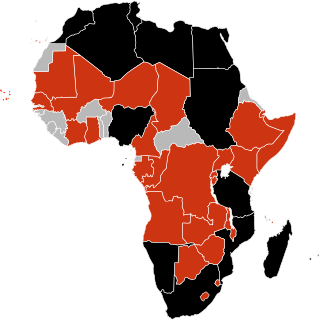
The 2009 flu pandemic hit Africa two months later than other continents with the first case reported in Egypt on June 2, 2009. As of December 1, 30 countries in Africa had reported cases and 7 countries in Africa had reported a total of 108 deaths. It was the least affected continent.

The 2009 swine flu outbreakinMalaysia was part of a larger flu pandemic involving a new type of influenza A virus subtype H1N1 (A/H1N1). As of 11 August 2009, the country had over 2,253 cases, beginning with imported cases from affected countries, including the United States and Australia, from 15 May 2009 onwards, and the first identified local transmission on 17 June 2009. On 12 August 2009, the Malaysian Health Ministry announced that it had discontinued officially updating the total number of H1N1 cases within Malaysia in line with guidelines issued by the World Health Organization. As of 21 August 2009, the unofficial number of cases reported in the media was 5,876. The first death related to the (A/H1N1) virus was reported on 23 July 2009, and there have been 78 deaths reported so far. On 6 July 2009, Malaysia announced a shift from containment to mitigation to tackle the spread of the virus. The federal government declared a national health emergency in Malaysia due to the (A/H1N1) outbreak and was considering imposing a health curfew similar to the week-long shutdown of non-essential services and industries in Mexico.

The 2009 swine flu pandemic in India was the outbreak of swine flu in various parts of India. Soon after the outbreak of H1N1 virus in the United States and Mexico in March, the Government of India started screening people coming from the affected countries at airports for swine flu symptoms. The first case of the flu in India was found on the Hyderabad airport on 13 May, when a man traveling from US to India was found H1N1 positive. Subsequently, more confirmed cases were reported and as the rate of transmission of the flu increased in the beginning of August, with the first death due to swine flu in India in Pune, panic began to spread. As of 24 May 2010, 10193 cases of swine flu have been confirmed with 1035 deaths.

The 2009 flu pandemic was a global outbreak of a new strain of influenza A virus subtype H1N1, first identified in April 2009, termed Pandemic H1N1/09 virus by the World Health Organization (WHO) and colloquially called swine flu. The outbreak was first observed in Mexico, and quickly spread globally. On 11 June 2009, WHO declared the outbreak to be a pandemic. The overwhelming majority of patients experience mild symptoms", but some persons are in higher risk groups, such as those with asthma, diabetes, obesity, heart disease, or who are pregnant or have a weakened immune system. In the rare severe cases, around 3–5 days after symptoms manifest, the person's condition declines quickly, often to the point respiratory failure.
The 2009 swine flu pandemic was a global outbreak of a new strain of influenza A virus subtype H1N1, first identified in April 2009, termed Pandemic H1N1/09 virus by the World Health Organization (WHO) and colloquially called swine flu. The outbreak was first observed in Mexico, and quickly spread globally. On the 11th of June 2009, the WHO declared the outbreak to be a pandemic. The overwhelming majority of patients experience mild symptoms, but some persons are at higher risk of suffering more serious effects; such as those with asthma, diabetes, obesity, heart disease, or those who are pregnant or have a weakened immune system. In the rare severe cases, around 3–5 days after symptoms manifest, the sufferer's condition declines quickly, often to the point respiratory failure. Although Ukraine was not (very) affected at first there was on outbreak of the virus in Western Ukraine in early November 2009 that led to the closing of public buildings and cancellation of meetings for three weeks.
2009 swine flu pandemic in Taiwan began on May 20, 2009, when a non-citizen who had been living in Taiwan returned from the United States via Hong Kong. By the end of September, more than 90% of influenza A detected in the community were Influenza A (H1N1).

















